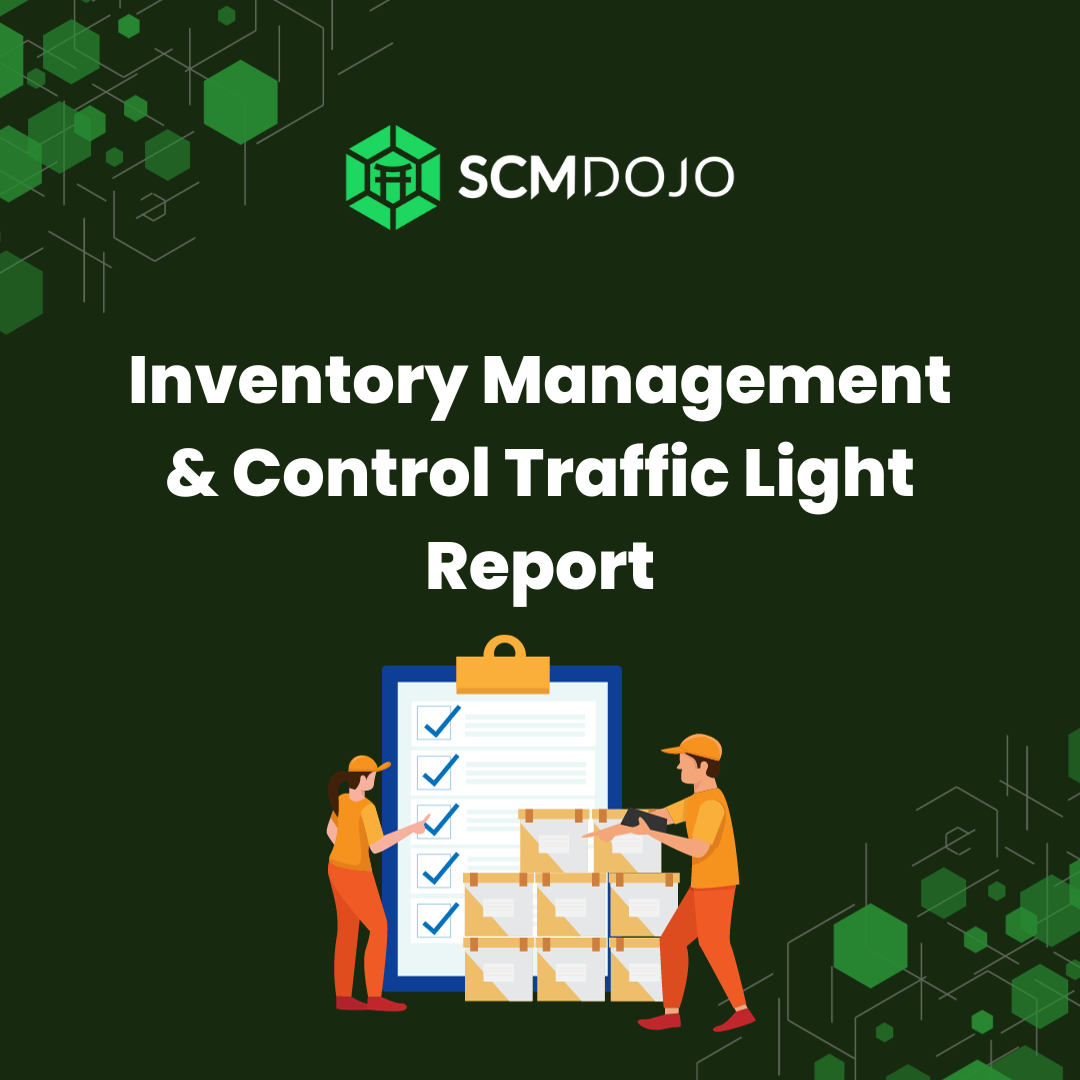When I wrote the article 18 Targeted Inventory Reduction Strategies for Supply Chain Professionals, I got some criticism from some of my readers that I am misleading the supply chain community and there are equally valid and reasonable reasons where we should actually increase inventory! Fair point?
Get Excess and Obsolete Inventory Policy
The benefits of inventory management is undisputed, and setting the right systems to counter several identified factors requires much more from professionals. Once your business understands the importance of inventory management, the full range of its benefit becomes apparent and appreciated.
Below I have shared 16 scenarios where it is beneficial to increase your inventory.
Before launching onto this, let’s remind ourselves of what is Inventory Management?
Inventory Management and control implies “the controlling of business stock or controlling the movement of products and services following their demand.”
In today’s business world, Inventory Management and control is extremely helpful as they play vital roles in any business’s failure or success that has a competitive market. An adequate inventory or safety stock in place enhances business operations with the effective flow of goods and services to meet customer service.
One word of caution before you read further: Inventory management generally carries a heavy burden, and that burden is the cost of carrying the inventory. You probably benefit by reading INVENTORY CARRYING COST – 9 PAINFUL CONTRIBUTORS YOU SHOULD TRACK.
In simple terms what do we mean by the cost of carrying the inventory? Someone has to pay for warehousing the inventory and pay interest on the money used to do both. Money tied up in paying for the above is money that cannot be used for other purposes. Who pays for all of this? It will be the company carrying the inventory, and that means the cost is ultimately passed on to the customer. Therefore, before you decide to increase inventory, make sure you consider all the factors in the inventory carrying cost.
So, When It is OK to Increase Inventory?
The flow usually entails buying a defined number of stocks, selling, or utilizing them until an acceptable number remaining is reached before ordering more, this is essentially a very simplistic core idea of Inventory Planning.
I believe there are several good reasons for increased inventory. Like any other supply chain decision, your decisions should align with the business plan. Starting from the point of the analysis, below are the top reasons to decide when it is OK to increase inventory.
1- New Product Introduction
In most businesses, introducing new products necessitates that manufacturers not only carefully craft the initial launch stock plan for their distributors and/or retailers but also consider how the demand will be controlled, during the Sales and Operations Planning Cycle.
The profile of Inventory Turns is mostly contingent upon the new product’s success. However, one thing is clear, it is impossible to have a successful launch of a new product without having the right quantity of stock in place.
So, my humble suggestion to supply chain folks is to listen to your product managers and sales guys, have the right launch stock in place. If they don’t sell it, make them accountable!
How to Run a S&OP Process- Benefits & Process Steps
2- Product Phase-in and Product Phase-out (Product Transition)
Product Phase-in and Product-Phase-out could happen for multiple reasons, for example:
- It could be an old product is phasing out– due to new product phasing-in
- Source change– which forces the production of stock from an old supplier to continue and overlap while you are in the process of bringing a new supplier on board or vice versa
- When there is regulation change– which forces companies to produce stock for old regulation due to demand while building stock product which fits the new regulation criteria for future phase-in
- Manufacturing site move– which forces stock production to continue as a contingency in anticipation of manufacturing issues at the new site.
There are many more examples that depend on the business you are in, but you get the gist here.
3- Known Supply Variability and Demand Variability
An increase in demand variability would mostly imply that you are to increase inventory in the future. Similarly, when there is high supplier lead time variability your first impulsive action is to increase inventory to avoid the ‘out-of-stock’ situation. This phenomenon of Demand and Supply lead-time variation is built-in in most safety stock formula. So, it’s okay to increase inventory whenever you’re faced with demands variability and supply variations.
4- Adjustment for any Market/Industry Seasonality.
One of the forecasted instances for specific products may include a demand surge, which may be due to market adjustments. Some other factors may consist of supply disruption and industry seasonality (like weather-related or seasonal celebration cases). The seasonal adjustment of economic/time data plays a vital role in the analysis of general trends, including inventory. Seasonal adjustment is a technique employed in the analysis of economic data towards tackling fluctuations that may result from seasonal factors. In cases where results show an impending surge in demand, you can implement an inventory increase plan to maintain your product balance.
5- Buffering for Holiday Period
A significant observation from my experience in supply planning is finding short supply during crucial holiday periods despite being aware of upcoming events. A shortage of inventory affects customer service drastically and adds a significant increase in price – which contributes to customer frustration. It may also affect your overall brand image and profit earning prospects projected for the period. Supply Chain Planning can be made for different levels and time horizons, so consideration for an increase in inventory becomes necessary to cover higher lead time to process. Key holiday seasons like the Christmas Holidays, Chinese New Year, and the Summer Holidays are times when an increase in inventory would be considered helpful to offset potential supply shortages.
6- Increase in Supply Lead Time
It would help if you do not increase inventory for lead time variation. Lead times remain the single most significant factor that affects how much inventory increase you will do. It is a common planning practice that longer lead times suggest holding more inventory. However, there are certain unusual extreme circumstances like the COVID-19 pandemic where companies that do significant business with COVID-19 affected countries are aware of this shutdown and many placed large inventory orders in advance to ensure that they had the supply to cover this period.
These are the companies that are overly reliant on single geography or a single supplier for key products. They do not have enough visibility across the extended supply network to see their risks. Furthermore. these are the kind of companies that won’t have inventory buffers for the magnitude of disruption that will be caused by the COVID-19 epidemic.
Safety stock parameters that were set-up based on historical performance are not likely to be appropriate as demand and supply variability increases significantly in this uncertain situation. However, the companies who will be able to quickly secure additional “strategic stock” from alternate suppliers in anticipation of key supplier disruption will be the one with better customer service.
7- Moving Manufacturing Facility
During any manufacturing relocation projects, I’ve noticed that a factory move is an excellent opportunity to design a more efficient shop floor layout, including the storage of materials and finished inventory. This invariably encourages the building of some buffer stock while you are designing and testing the new manufacturing flows or materials movement.
8- Planned line Downtime (Maintenance or Lean Event)
Preventative maintenance is a common maintenance approach with several benefits, and it is not incredibly difficult or expensive to implement. Planned line downtime is a period reserved for scheduled upgrades and maintenance during which some business process would need to be temporarily closed down. Once you sense there may be some planned line downtime, it may be advised to increase inventory to serve the demand coming during or after the maintenance downtime. This approach is taken by businesses looking to avoid any issues after the scheduled maintenance. However, finding the right time to schedule planned line downtime can be complicated, so be careful and consider every key factor of your business plan.
Should you do it if your Lean team is doing a Kaizen event? The simple answer is yes!
I remember a week when our Lean/CI Team decided to do a Lean event with all good intentions but did not inform us (the supply chain team!) and 3 days later we didn’t have our A-Class finish product in stock and had to take a hit with our On-Time Delivery target. The solution is simple, proper communication between the OPEX & Supply Chain folks and makes sure we have enough safety stock to cover the time when there won’t be any assembly on the manufacturing cell.
5S – Kaizen Guide: Organizing the Workplace for Flow
9- Customer VMI (Vendor-managed inventory) for Growth Projects
VMI (Vendor-managed inventory) entails that you monitor the customer’s list or customer transmit inventory data. Based on the growth data received, you can decide when to increase inventory based on identified stock predictions. Your business process and customer base both have mutual dependence on inventory levels, which can lead to stronger customer relationships that enhances your product sales as well as an increase in revenue. Your revenue growth would come in part because VMI ensures stocks are readily available to customers, and the needed demand visibility is met. Your market share may increase because VMI may affect the profitability of the customer’s service satisfaction and operations, with each leading to additional orders, therefore increase in inventory is a good idea!
10- Subcontracting Obligations with OEM (Original Equipment Manufacturer)
Original equipment manufacturers (OEMs) often subcontract production of parts to specialized production companies. In such a relationship, it is the supplier who manages the inventory of customer-specific parts that it produces for the OEMs. For the supplier, the main advantage of engaging in this kind of vendor managed inventory (VMI) relationship is the possibility to optimize production batch sizes, resulting in lower system-wide costs.
Substantial savings can be obtained from optimizing production batch sizes, both for the parts supplier from reduced work-in-process and setup costs and for the OEMs from reduced delivery times and lower safety stocks. Under VMI, the parts manufacturer, acting as the supplier, would be responsible for availability of parts at the OEMs assembly plants, and would be free to set a production and delivery batch size for each of the parts in order to optimize system-wide costs under a service constraint. Hence, increasing inventory is a good thing!
11- Supplier Is About to Close Or Bust
Single sourcing is generally a good thing. However, if for example, you hear the bad news that your supplier is about to go bust, do you have an alternative supplier? What is your next reaction, panic? Maybe.
Once you get over that feeling of panic your next reaction should be to find a solution for continuity of supply may it be for raw materials or finished goods.
In that case, while you are searching for an alternative sources, you need to work with the incumbent supplier and increase the stock production which should hopefully be enough to see you through until you find an alternative supplier.
12- Source Shift Programs
Your awesome procurement team finds a new supplier which gives you 12% cost reduction and hopefully more when they measure Total Cost of Ownership. Does your supply planning team start buying from this new supplier and drop the incumbent supplier instantly? The short answer to that is that that is not recommended at all. You cannot suddenly stop buying from the incumbent supplier and assume things will be hunkey dory from day one with new supplier, it never happens!
The best suggestion I would give is to do a stock build with a new supplier, and once your quality team is satisfied you can then start gradually slowing down the supply from the incumbent supplier.
13- Promotion Campaign
Promotion campaigns are almost always a part of the sales and marketing mix offered by retailers. These promotions are always done for good reasons like driving sales and assistance with moving inventory. As a business seeking to exploit promotional campaigns, the consideration of taking an increase in stock may well be welcomed on both sides. Dependent on the promotional campaign, you can get a variety of offers that would help slash your final cost and ROI. To get the most out of them, you may consider the promotion type as well as how to execute them. There are several reasons to consider multiple scenarios, but overall, every business increases inventory during planned promotional periods or specific seasons.
14- Increase in MOQ (Minimum Order Quantity) To Benefit Better Cost
A Minimum Order Quantity (MOQ) is often considered as a necessary evil in manufacturing, retailing, and wholesaling. Some businesses hate it, some like it, and some simply have to make use of it. The MOQ is the lowest possible amount of stock a supplier is willing to trade. In cases where you find an MOQ purchase for a specific product which offers a discount for buying more, it’s essential to consider such offers in terms of profits and turnovers to your business.
Although an increase in inventory is expected, the MOQs offer usually varies, so ensure you perform due diligence concerning its shelf life and quality over time. Big-ticket items that are costly to make, will typically have lesser MOQ than low-ticket products that are cheaper and easier to make. Also, consider the life cycle cost of such inventory and possible seasonal variations.
15- Threat of Production Worker Strike!
If you are in France, for example, it is perfectly normal for plant production workers to go on strike! And most of the time they do it without any warning and rarely without reason!
Worker strikes can be expensive and draining for most businesses involved. If you consider your business inventory to be affected by an impending strike, you may want to increase inventory to be on the safe side. It has happened to me during my planning days, so I’m sharing my experience, so you don’t repeat the same mistake!
16- Potential Shifts in Sales Channels
Prepare for potential channel shifts. China, USA, UK, and Other European countries have seen a significant increase in online shopping demand during this COVID-19 pandemic. From everything, including fresh food and groceries to the usual online clothes and electrical item purchases. This unexpected shift in channels has created challenges for many companies—insufficient eCommerce capacity to meet demand, insufficient inventory allocated to the online channel (while excess allocated to other channels), and a severe shortage of last-mile delivery service capacity. Consumer-oriented companies should assess the implications of a potential shift of demand from traditional retail to online, and move quickly to prepare. Therefore, if you focus on taking advantage of this trend, then you should increase inventory to support the eCommerce channel growth.
Finally,
While several businesses work to curtail their inventories to lessen carrying costs, there is the possibility of running too lean. In this article I have shared 16 scenarios where it is good to increase inventory.
Considering these and proper planning techniques, you will have the right item, in the right quantity, at the right time, and in the right place.
Please share any other scenarios where you have increased inventory and I have missed in this article? Looking forward to hearing from you.
Recommended Reading
Essentials of Inventory Management
Inventory Accuracy: People, Processes, & Technology
The Definitive Guide to Inventory Management: Principles and Strategies for the Efficient Flow of Inventory across the Supply Chain (Council of Supply Chain Management Professionals)
About the Author- Dr Muddassir Ahmed
Dr MuddassirAhmed is the Founder & CEO of SCMDOJO. He is a global speaker, vlogger and supply chain industry expert with 17 years of experience in the Manufacturing Industry in the UK, Europe, the Middle East and South East Asia in various Supply Chain leadership roles. Dr. Muddassir has received a PhD in Management Science from Lancaster University Management School. Muddassir is a Six Sigma black belt and founded the leading supply chain platform SCMDOJO to enable supply chain professionals and teams to thrive by providing best-in-class knowledge content, tools and access to experts.
You can follow him on LinkedIn, Facebook, Twitter or Instagram









